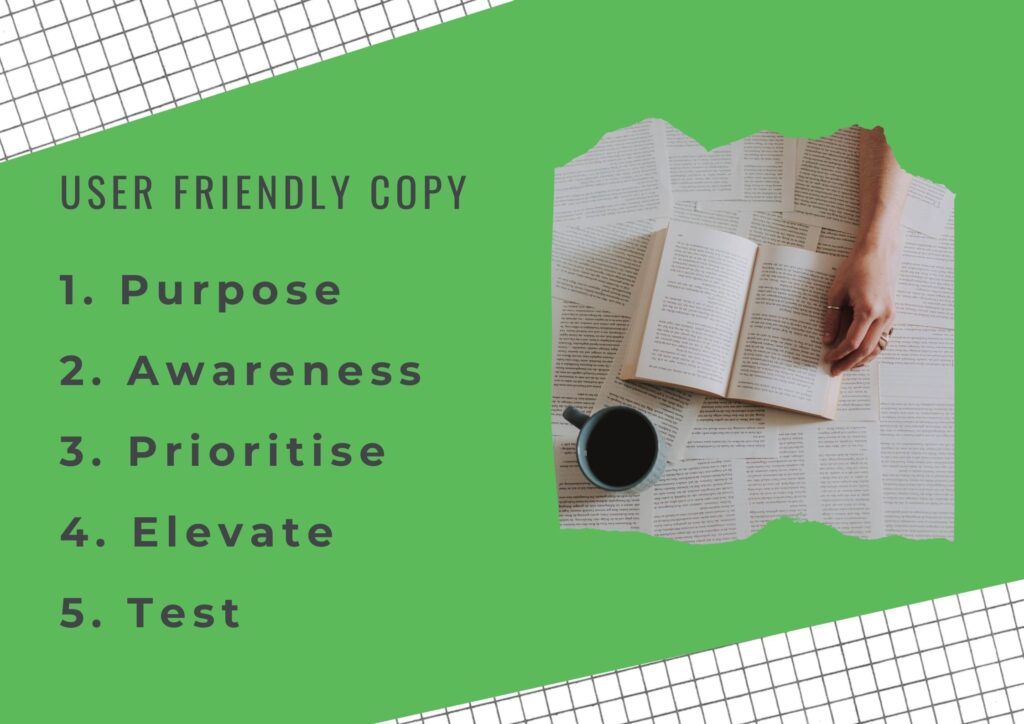Some people think to talk. Others talk to think.
I belong to the second group, and my writing is the same. I need to write just to work out what to write about.
The irony is that when I do manage to write a masterpiece, usability testing regularly shows that users just aren’t bothered to read page copy. In reaction, you will often hear that website pages need to be scannable and easy to digest.
What do we mean by ‘scannable’?
When we observe user behaviour, the scanning approach is deployed to hunt out recognisable keywords and phrases or anything that relates to their task. Users are seeking proof that they are looking in the right place:
- Is this site/brand credible?
- Am I going to complete (or move closer to) my goal?
On noticing these confidence-affirming words and sentences, a user is likely to invest a little more time in your page or website. Otherwise, your user will revert and look elsewhere.
That’s okay if your website can’t help this person, but it sucks if your page of carefully crafted copy holds the answer.
Bullet points alone are not the answer
Utilising bullet points is an obvious way to help users to scan your content, by reducing copy and breaking paragraphs down into bitesize line items.
This is a nice intention, but simply reducing your copy into bullet points doesn’t fair well without care and attention. Bullet points need to be designed well to be scannable, and when faced with a handful or two of individual lines of copy, the scanning activity returns.
Edit for your reader
We therefore can’t rely on simply editing our text into individual line items. We need to work smarter and take some time to contemplate our essay outside of our ego.
Here are five steps, once you have your draft, to help you reshape your article for user success:

1/. Purpose
This is about you. Be clear on what you hope to be the outcome for people reading this (to connect, navigate to another page, sign-up, to feel inspired/content, etc).
2/. Awareness
Be at one with your reader and put yourself in their shoes. What do they hope to be the outcome of reading this (questions answered, a decision made, improved knowledge in the subject, to feel inspired/content, etc)?
3/. Prioritise
What are your readers looking for first to confirm that they are in the right place? List your key points and order them based on how the reader will want to digest the information. Edit your content to accommodate this new order.
4/. Elevate
Be sure that keywords are easily visible, i.e., used in titles, early in a paragraph, or to describe any supporting images or charts. Additionally, include a graphical representation if possible, this will save your reader from having to scan your page.
5/. Test
Find a couple of willing participants, set the scene, and ask them to have a look at your new page to see if they can find what they need. Notice how they navigate your page for the first 30 seconds. Did they find what they needed?
Afford yourself time
Finally, allow yourself the time to contemplate and follow the above steps. If, like me, you have copy to write but you are no copywriter, it is likely that you’ll need more time than you estimate. So, get started early, and break your writing into phases i.e., a. draft, b. 1-4 above, c. 5 above (Test), d. final edit.
It doesn’t need to be perfect, but your reader needs to be able to quickly confirm that they have found a page that will help them before they appreciate your wisdom in writing.
Happy editing.
See also: Respect your Reader

